Homemade Pie Crust contains both butter and shortening to make it tender and flakey. The secrets to a perfect crust are easier than you think.
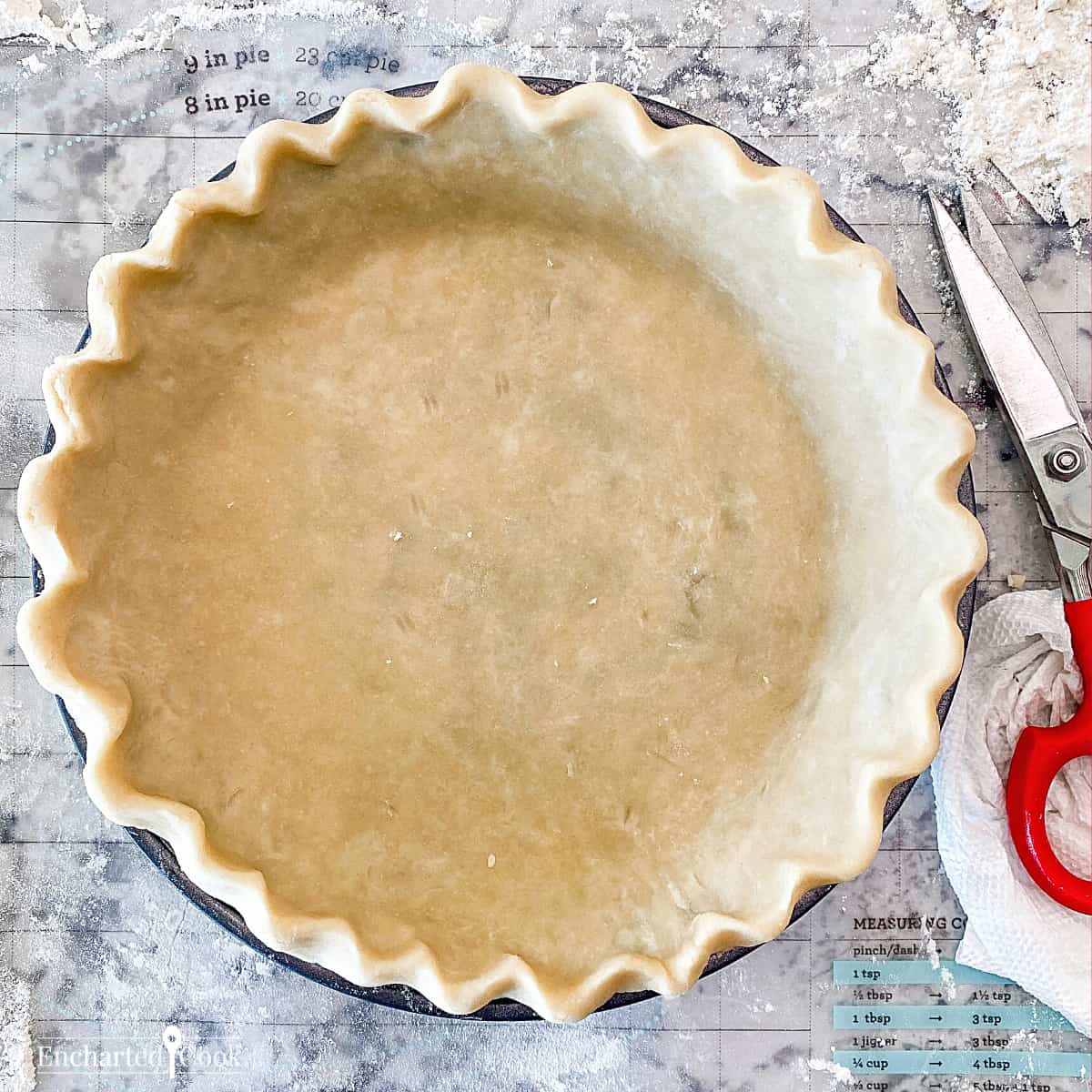
Jump to:
There are so many recipes and techniques for making the best homemade pie crust. Some say you must have everything super icy cold. Others state to add ingredients like lemon juice, vinegar, vodka, or even a beaten egg. How do you know what is best and how on earth can you trust any of them?
The answer is that some recipes work for some people. Cooking is like that sometimes. There can be many answers to a question like "how do I make the best?"
Making Pies with My Mom
Every year Mom would make pies for the freezer, so we could have pie during the winter to have for Sunday dinner. In total, we made around 15 to 20 apple or apricot pies from the fruit of the two trees we had in our backyard. So, yeah, we made a lot of pie crust dough and I learned a lot during those years about it.
She would meticulously measure all of her ingredients and mix them carefully only to be disappointed. In time she switched to adding hot water to make her crust instead of cold icy water. This meant she used less water and the hot water made a crust that held up well for freezing... and she was masterful at making this crust year in and year out.
It turns out that the hot water made the crust come together more quickly and she used less water... and less water meant not working the dough so much to produce tough gluten.
However, over the years I realized her pie crust recipe required hot water because the dough was too lean. The ratio of flour to fat was way too low which meant there was not enough fat to cover all of the flour and there was always some flour that was dry after the "cutting in" process.
Eureka! The hot water melted the fat and helped it cover the flour more efficiently. While this made a great crust for freezing, it was not flakey and tender.
How to Make a Tender Flakey Pie Crust
Nothing has to be extra super icy cold, not the fat nor the water. Cold is good enough. And you don't need to add any extra protein like a beaten egg, acid to soften the dough, or booze to reduce the water in the crust as it bakes. So for me, I realized all of the "tricks" in many recipes are completely unnecessary.
The second thing I learned, which took years of trial and error, is to make a fattier dough so I don't work so hard to cut together the flour and fat. I've found the best ratio of flour to fat is 1.25 cups of flour to ½ cup of fat.
| Single Crust | 1 ¼ Cups Flour | ½ Cup Fat |
| Double Crust | 2-½ Cups Flour | 1 Cup Fat |
| 3 Crusts | 3 ¾ Cups Flour | 1-½ Cup Fat |
This recipe and the method I use are really simple and you do not need a food processor, or a special knack to make a delicious flakey crust.
Pie crust for me has been something like alchemy. Searching for that perfect flour-to-fat ratio, the perfect water volume, and the bare minimum time to mix the pie dough. But, it's really not that difficult and I'm going to share the top 5 secrets I've learned over the years to make the perfect pie crust.
5 Secrets to Making the Perfect Homemade Pie Crust
- The proportion of flour to fat must be 1-¼ cups of flour to ½ cup of shortening, butter, or lard.
- Measure and refrigerate the butter and shortening before beginning. Cold fat is easier to work into the flour.
- The fat must be cut into the flour so that no loose flour is in the bowl. In other words, the fat must cover the flour completely. It’s okay to work the flour and fat for as long as it takes. The pie crust only gets tough when you work the water in too long.
- When adding the cold water, sprinkle it evenly over the dough. A silicon spatula is the best tool to fold and mix the dough just until it comes together.
- Chill the pie crust dough for at least 20 minutes before rolling it out.
Seriously, that's all there is to make a perfect flakey pie crust. I know from making pies with my mom for many years that it can be a struggle trying to get a homemade pie crust right. But with the right recipe and technique, it is so super easy it seems magical.
So, let's bake!
Ingredients

Here's what you need to make a tender, flakey, pie crust:
- All-Purpose Flour - Just use all-purpose flour and don't substitute bread flour, cake flour, or any fancy schmancy flour.
- Salt - Ordinary table salt is good. You know, the one in the round blue container with a little girl with an umbrella on the label.
- Sugar - Just a small amount of sugar softens the flavor of a crust. Don't worry, the amount in the recipe won't make it a sweet crust. But it will taste better with a little sugar added. You can use powdered sugar or white granulated sugar.
- Shortening - I like to use shortening for half of the fat because it has a higher heat tolerance than butter and lets the crust brown without burning in a high-heat oven. Mixing shortening and butter gives the best qualities of each, higher heat tolerance plus rich flavor.
- Butter - I also like to use butter for its rich flavor. Check out my easy tips on how to measure butter that will save you time.
- Ice Water or Cold Water - The water must be cold to make a great crust. Add a few ice cubes to tap water or use refrigerated water, both work well.
Please see the recipe card for the exact quantities.
Instructions
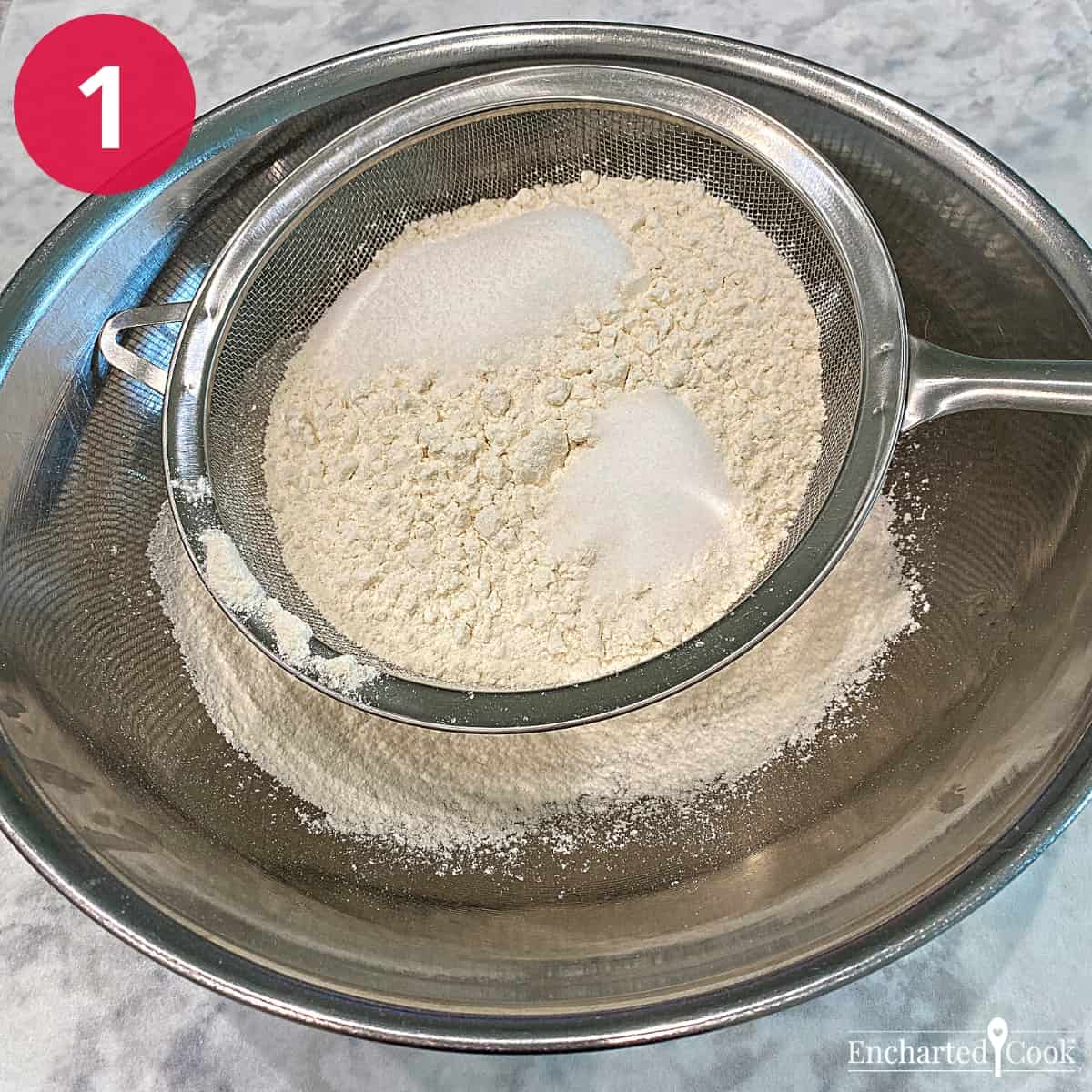
STEP 1 - In a medium-sized bowl sift together the flour, salt, and sugar.
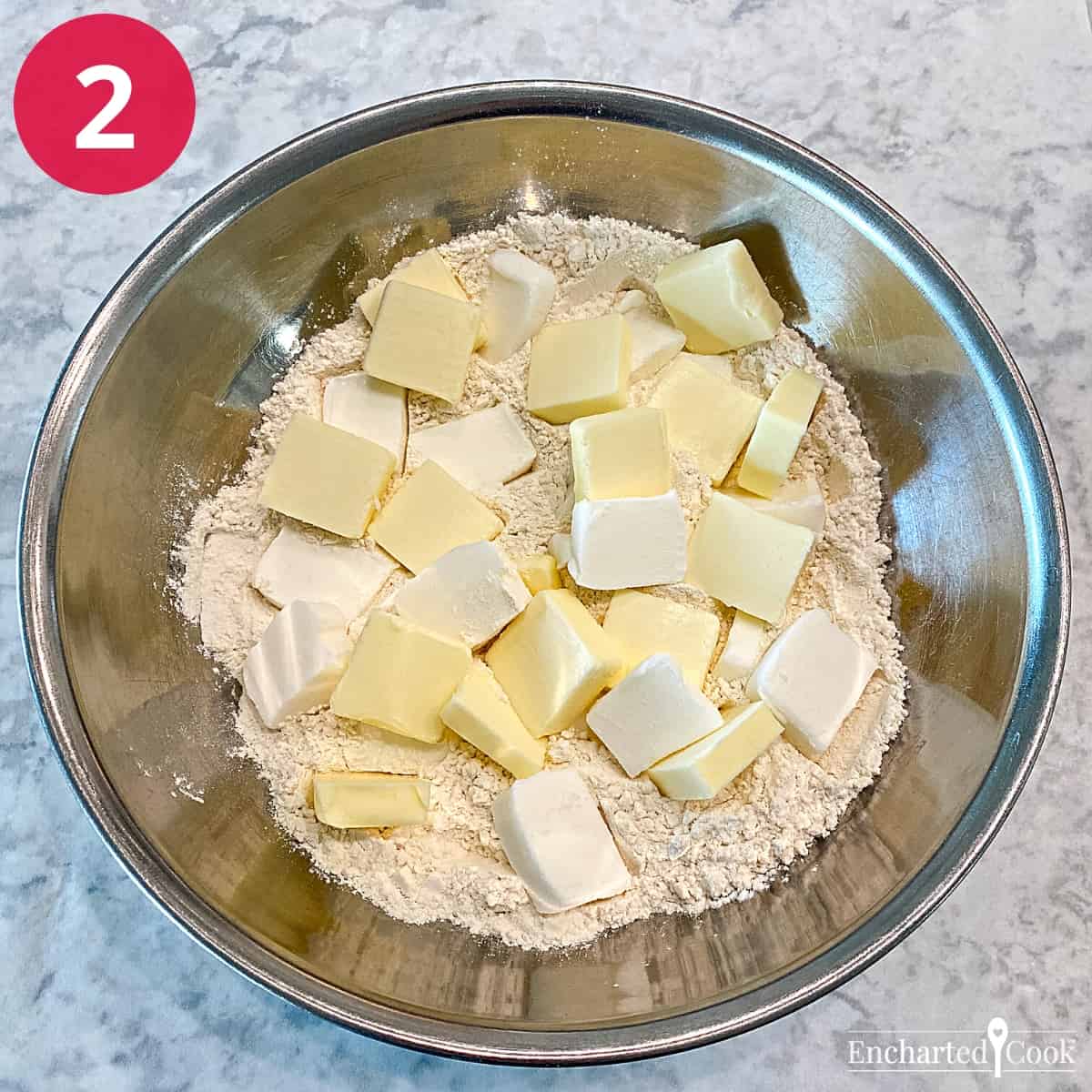
STEP 2 - Slice the cold butter and shortening and add them to the dry ingredients.

STEP 3 - Using a pastry cutter, two knives, or a fork, work the shortening and butter into the dry ingredients. The mixture should look like very small peas with coarse sand.

STEP 4 - Sprinkle half of the cold water over the pie crust dough. Use a silicon spatula to fold the dough just until it barely comes together. Sprinkle the remaining water and continue to fold the dough just until it comes together.

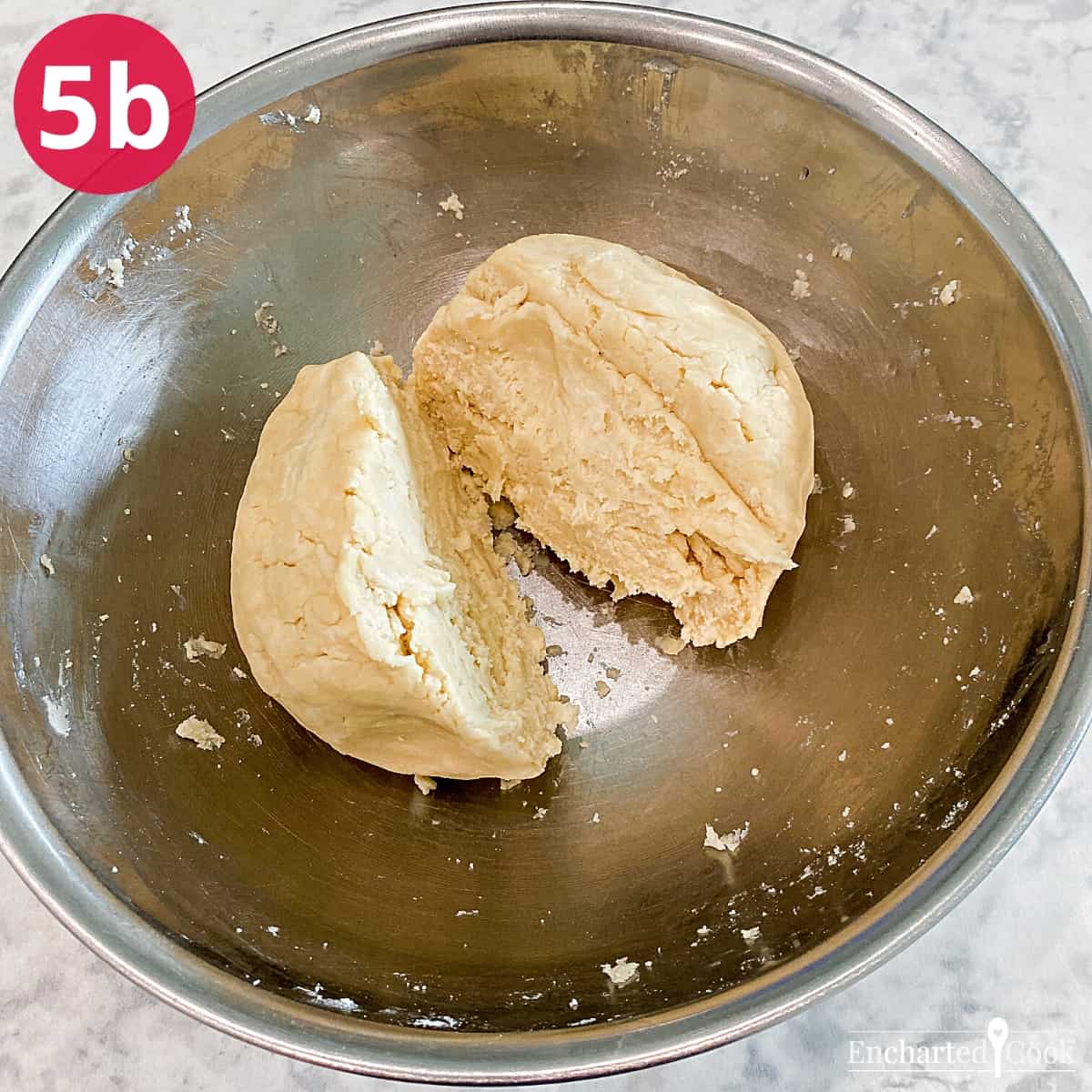
STEP 5 - Gather the homemade pie crust dough into a ball, divide the ball into two halves and flatten each half into a disk.

STEP 6 - Wrap each disk in cling wrap and refrigerate them for at least 20 minutes before rolling and shaping. Chilled dough is easier to handle and also gives time for the dough to relax.
Rolling Out the Pie Crust Dough
If you have stored your pie crust dough in the refrigerator for longer than 20 minutes it will need to warm slightly for you to be able to roll it out. So, remove the pie crust dough from the refrigerator at least 20 minutes prior to rolling it out.
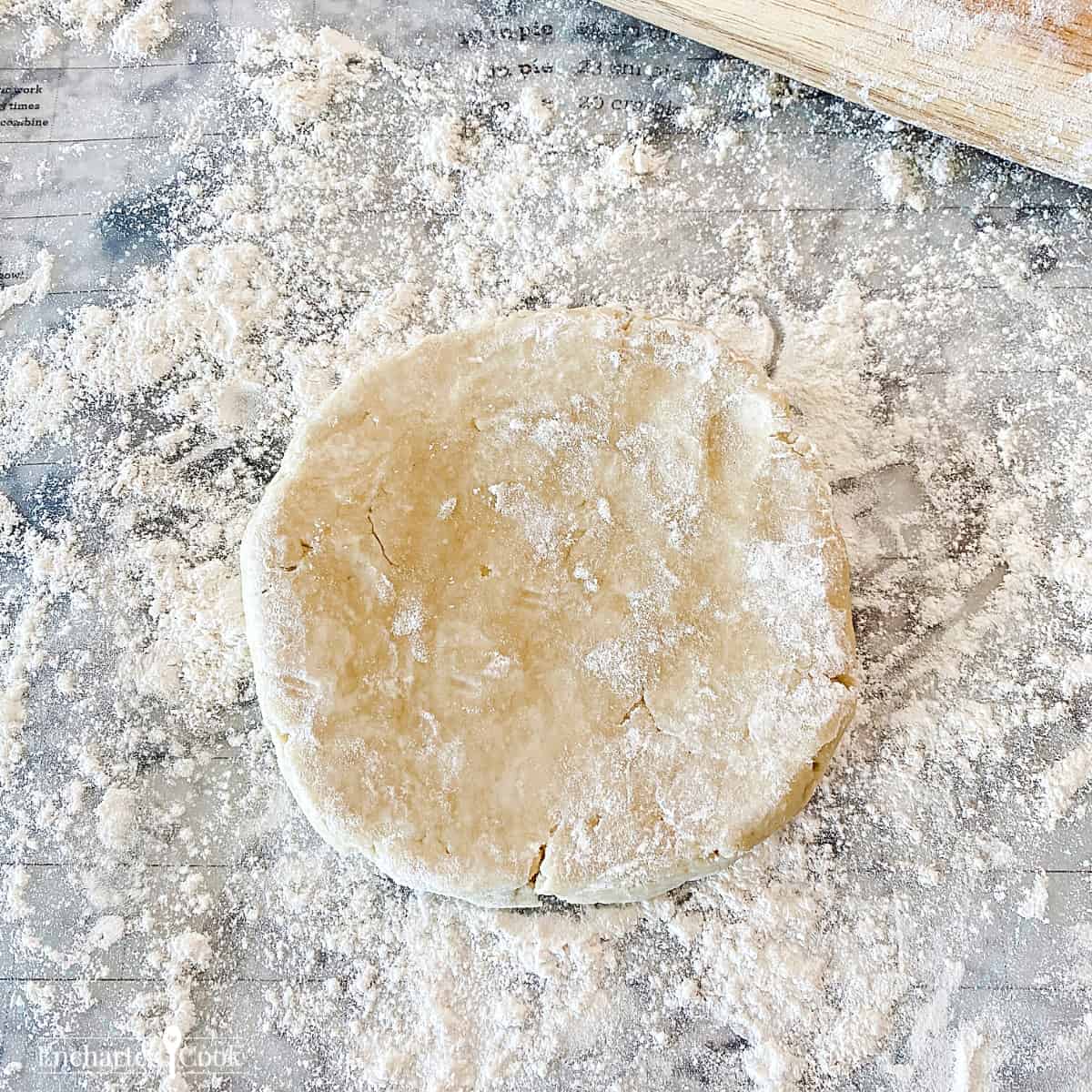
Sprinkle a work surface with flour. Place a disk of pie crust dough in the center of the work surface. With your fingers and the heel of your hand pat the dough out to prepare it for the rolling pin. Toss a small amount of flour beneath the disk to prevent it from sticking.

Roll the dough from the center out. Check often to ensure the dough is not sticking by lifting and rotating the dough. This is key. Lift the dough, throw some flour beneath it, and rotate the dough ¼ turn.
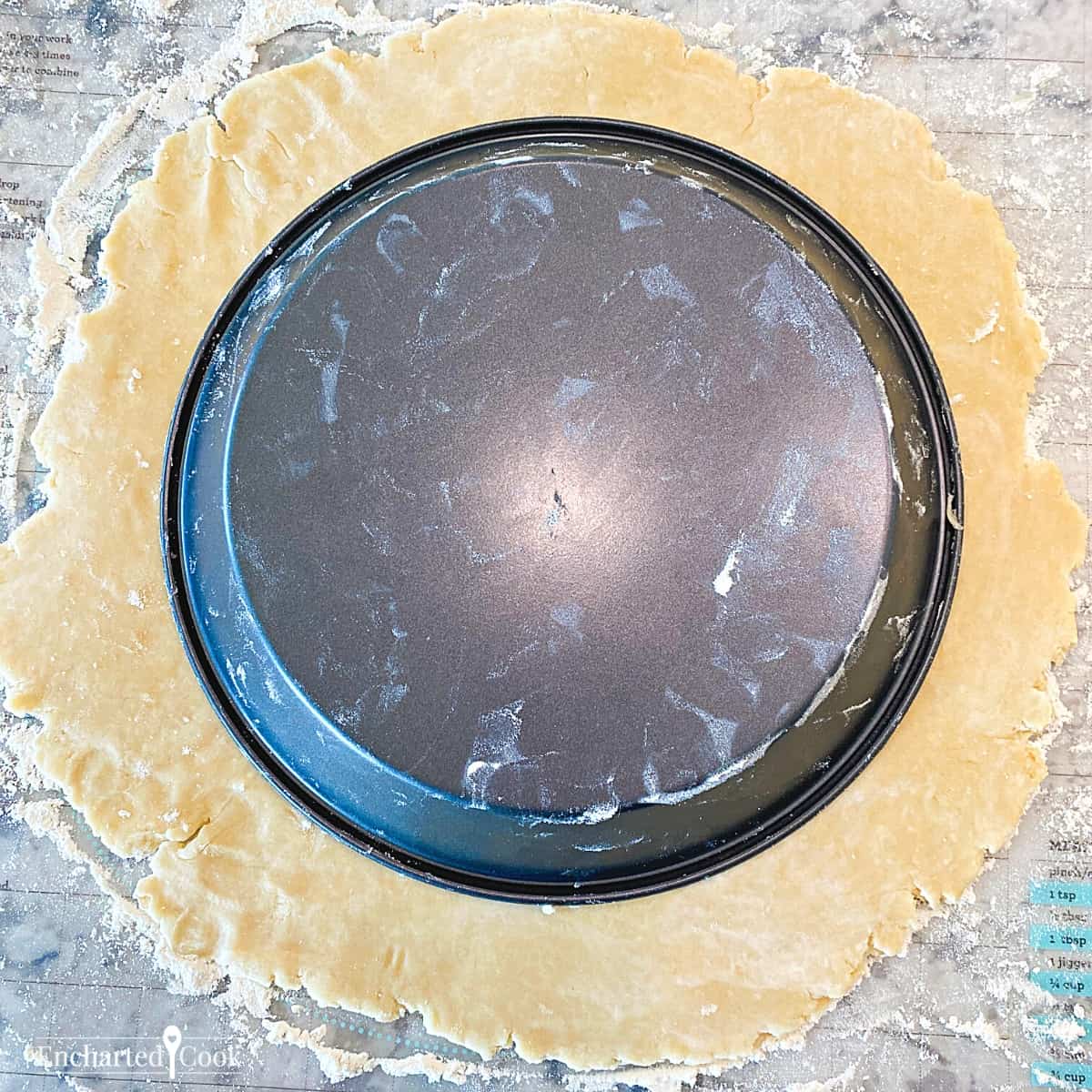
Roll the dough at least 2" larger than your pie pan. Place an upside-down pie pan on the dough to check for size.

Roll the dough onto the rolling pin to transfer it to the pan and gently ease the dough into the pan.
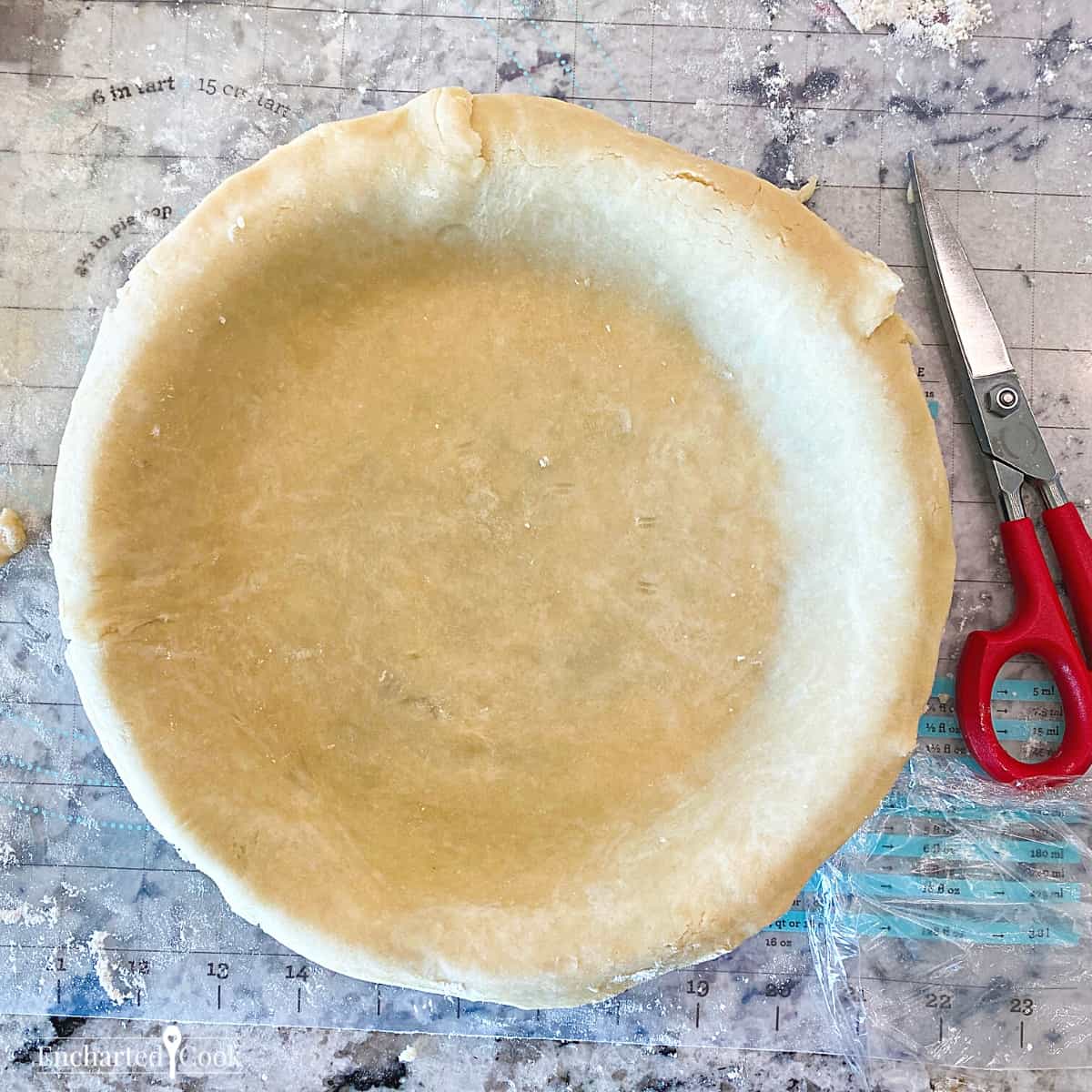
Trim any excess dough from the edge of the pan.

Fold the cut edge under the edge of the dough to create a thicker edge. Crimp or flute as desired. The pie crust is now ready to be filled and the pie baked.
My Top Tips
Making the Pie Crust Dough
Measure and refrigerate the shortening before using. I generally allow 2 hours to chill it.
Don't add the water 1 tablespoon at a time. Many recipes state to do this. But this overworks the pie crust dough and toughens it. Add half the water, fold the dough, and then add the rest of the water.
Rolling Out the Pie Crust
Remove the pie crust dough from the refrigerator for 20 minutes before rolling it out. Overly cold dough is difficult to handle and will take longer to roll out.
The most important thing is to not let the pie crust dough stick to the work surface. Periodically turning the dough as it is rolled, and adding flour as needed, is key to good roll-out.
Make-Ahead & Storage
Store the pie crust dough in the refrigerator wrapped in cling wrap. It can be stored in the refrigerator for up to a week or frozen for up to a month. If you have a FoodSaver vacuum sealer, you can freeze pie crust for up to 6 months.
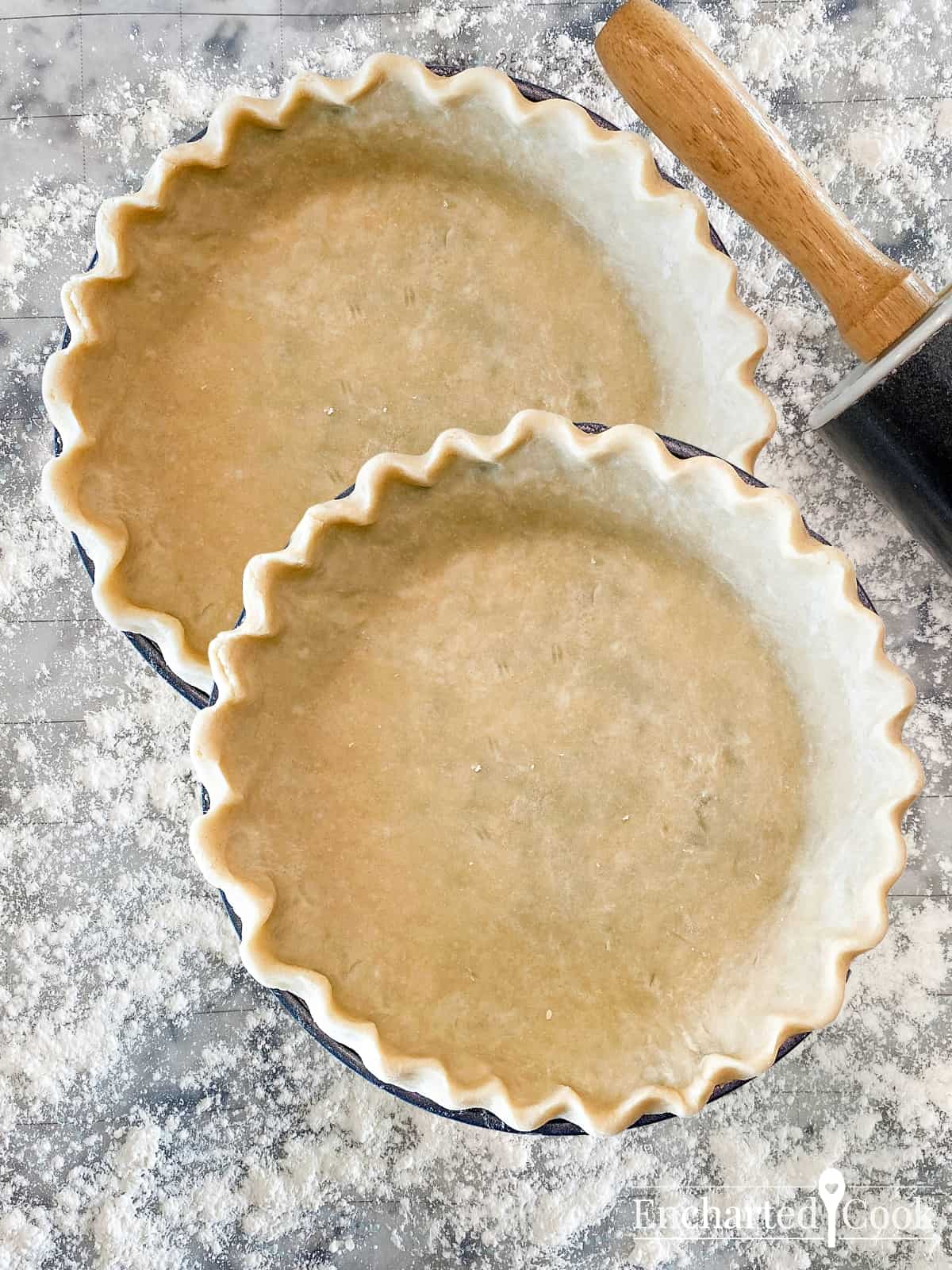
Related Posts and Recipes
- Pie Crust Recipes Chart
- Apple Pie with Sweet Cookie Crust
- Apple and Berry Rustic Tart
- Cranberry Sugar Pie
- Pastry Washes Comparison Chart
📖 Recipe

Homemade Pie Crust
Ingredients
Instructions
- In a medium-sized bowl sift together the flour, salt, and powdered sugar.2 ½ Cups All-Purpose Flour, 1 Teaspoon Salt, 1 Tablespoon Powdered Sugar
- Slice the cold butter and shortening and add them to the dry ingredients.½ Cup Shortening, ½ Cup Butter
- Using a pastry cutter, two knives, or a fork, work the shortening and butter into the dry ingredients. The mixture should look like very small peas with coarse sand.
- Sprinkle half of the cold water over the pie crust dough. Use a silicon spatula to fold the dough just until it barely comes together. Sprinkle the remaining water and continue to fold the dough just until it comes together.6 Tablespoons Ice Water or Very Cold Water
- Gather the pie crust dough into a ball, divide the ball into two halves and flatten each half into a disk.
- Wrap each disk in cling wrap and refrigerate them for at least 20 minutes before rolling and shaping.
Notes
Nutrition
Per 1 serving. All nutritional information on this site is an estimate. Your results may vary.



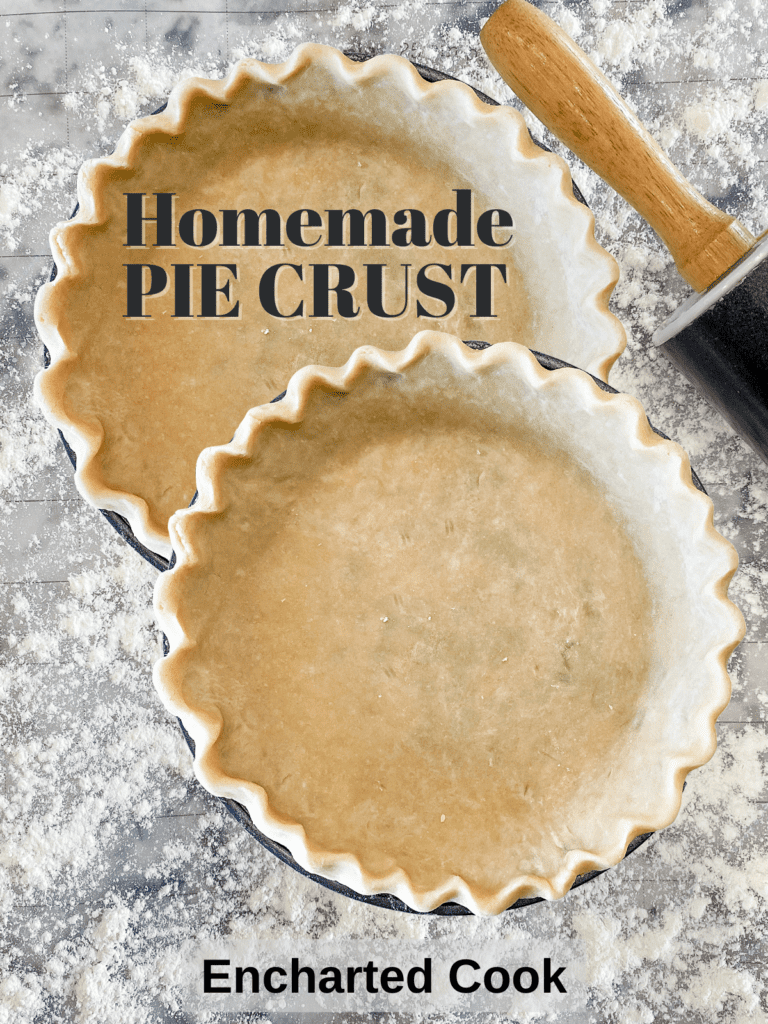
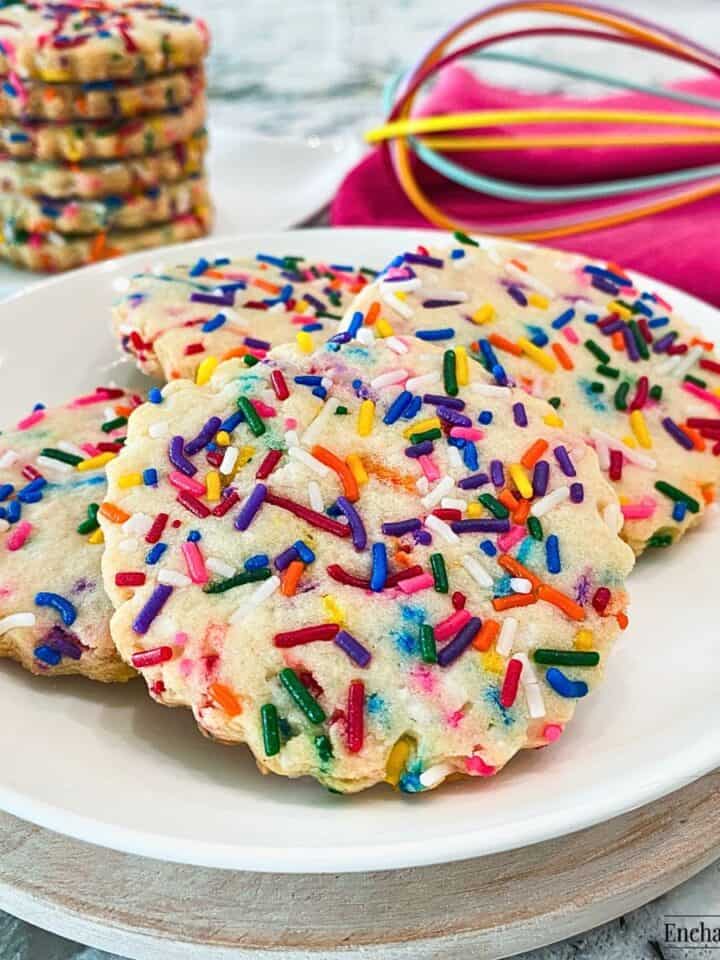
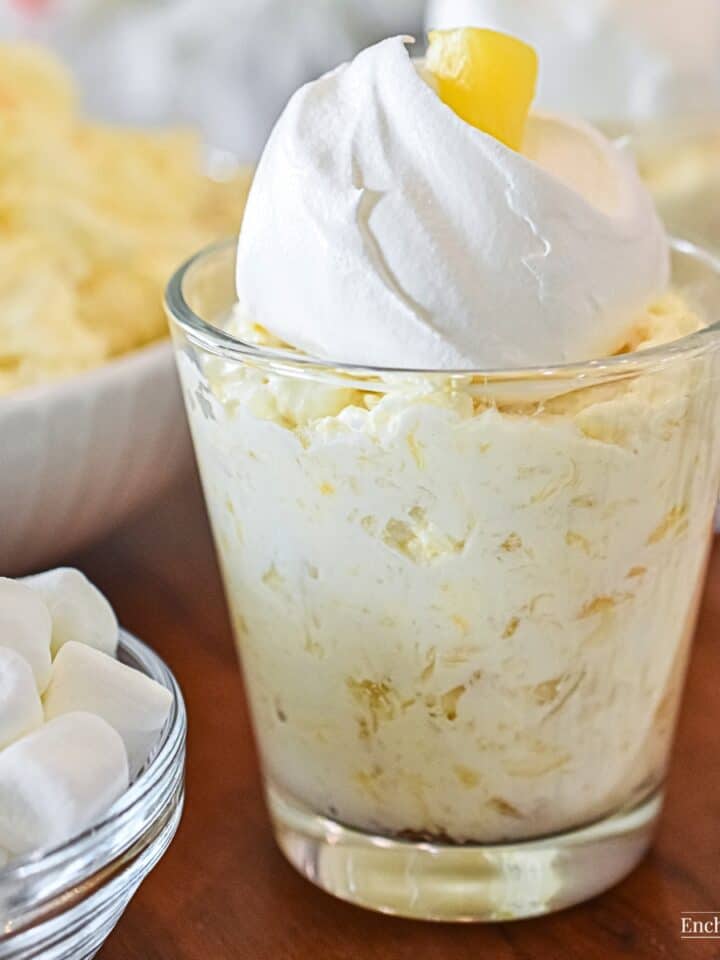
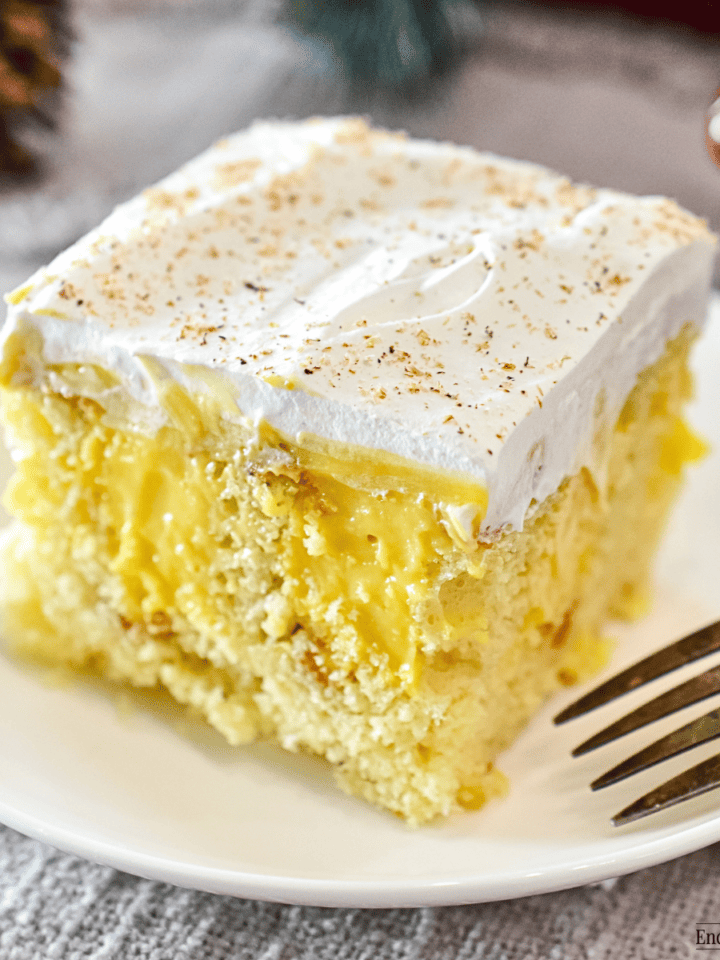

Comments
No Comments